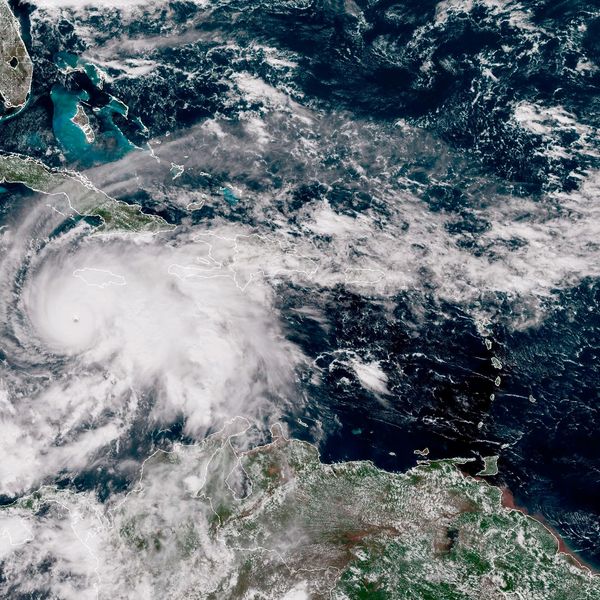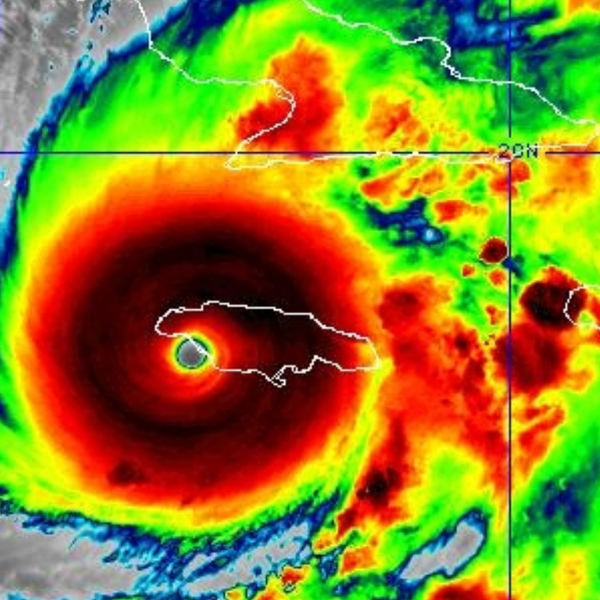“He bestrides the narrow world like a colossus,” said the canny Cassius of Caesar.
What may we say of Trump? That you never know when he may from Caracas to Greenland jump?
Iran is in between, as theocracy seems to be unravelling in that land of the Ayatollahs – the same theocracy which gathers pace in Bharat. (Has not our own oracle just said in Mathura, “nothing can stop India from becoming Hindu Rashtra”?)
Lay off the protesters, Godzilla has warned the powers-that-be in Iran.
May we please say the same of protesters in Minneapolis, Portland, Washington, New York, etc. as they seek the ouster of the national guard from their states, and justice for the 37-year-old mother who was shot dead by a trigger-happy federal agent as boys swat flies?
So, let us return to Greenland. Just 30,000 or so peace-loving citizens of the NATO country Denmark live there in Arctic quietude.
They wish to be left alone. But what if Godzilla does not leave them alone? What may Denmark do?
Recalling Cassius again, he did complain to Brutus: “The fault, dear Brutus, is ours that we are underlings.”
So the Greenlanders, in point of fault, are underlings.
Time was when us underlings were protected by commonly agreed norms of moral and political behaviour issuing from commonly agreed rules of inter-state arrangements.
Well, Godzilla says that time is past.
Capitalism, over some six rapacious centuries or so, has made kill-and-grab a national necessity.
Darwin said only the fittest will survive, and pray who is the fittest? Godzilla, of course.
But, hey, what of Jesus and the Sermon on the Mount?
Should not the shining city on the hill (alternately, the mount) be the first to obey them injunctions?
May be, but for now Darwin has the upper hand, and Jesus would have understood that Godzilla is only setting out to destroy the small-time Pharisees who refuse the supremacy of the dollar and the genius of crypto.
Was not it ordained that the US of A was to be unlike any other nation on earth, beloved of the gods by pre-destination, the elect among the “fallen” homo sapiens of the world?
Of course it was. That is how the dissenters and the Evangelists came to forge this city on the shining hill, or was it a shining city on the hill – whichever, does it matter?
So if Godzilla does stride among the Lilliputians on Greenland, what may a Xi or Putin do? Fire them A bombs? Of course not. They will march into their own Greenlands.
As to Iran, let us ask Godzilla why he seeks to dismantle Iran to secular royalists, while preferring a Hindutva-Zionism make-over in India that is Bharat.
But, pause: Godzilla is a literate animal, and will cite what the good Doctor Johnson famously admonished, “Consistency is the hobgoblin of small minds.”
And where Godzilla may be driven by a negligible brain, do note that he has no small mind.
This here is an age now when theories of governance may be spun each day to suit the grab at hand; pitiful are the rulers who remain shackled to jejune considerations of reason and empathy. ‘You may want the same things as I do, but I am right in my wanting and you are wrong.’ Why? ‘Because you are not Godzilla enough, brother.’
So do thine calisthenics, muscle up, and then talk to me, and we shall then see who wins the thrilla in Manila.
Meanwhile, the teachings of the ethical gurus and of the scriptures ask to be realised not through pacifist pussy-footing but by emulating Nature, which as, Lord Tennyson told us, is rightfully “red in tooth and claw”.
So carry on, Godzilla, we are convinced of thine logic.
Carry on Bhagwat, be Vishwaguru of the chosen, and let those that see not the point either serve the chosen at lesser rates, or trudge to newer swamps of their liking.
And dear Putin and XI, either throw your pretentious hats into the Godzilla ring, or prepare to yield greater parts of the fodder you think of as yours by the decrepit norms of equity in loot.
And what may the underlings of the world do?
Pray that climate change overpowers the Godzillas of our time so decisively as to leave nothing for them to grab.
Let us recall the fury of Lear’s invocation upon the desolate heath: “Blow, winds, and crack your cheeks! rage! blow! You cataracts and hurricanoes, spout, Till you have drench’d our steeples, drown’d the cocks.”
To the waters let us add the fires that now everyday merrily gobble up huge acreages of privileged green lands.
The underlings may lay their trust in fire and water which alone may terminate the age of the Godzilla as they did earlier that of the dinosaurs.
From that apocalypse may be born “a new heaven and a new earth” wherein the lamb and the lion may quench their thirst in the same stream cheek by jowl, and part as friends in equal worth.







